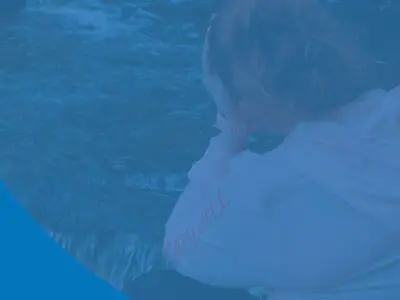All addictive substances activate the reward centers in the brain, but stimulants such as cocaine, amphetamines, and nicotine really light up those areas, making them highly addictive.
Stimulants also affect the parts of the brain that regulate attention and focus (the stimulants Ritalin and Adderall are prescribed for those reasons), and the transmitter norepinephrine that causes a person to feel more energized.
There’s a binge-and-crash cycle that often accompanies stimulant addiction. A person might use repeatedly for hours or days, then, when the drug exits their bodies, they might feel drained, sick, depressed, and agitated. That can spur further use, and often in higher doses as they chase that euphoria they’ve grown to love.
In the midst of that, the person using stimulants begins to link specific cues — it can be a certain crowd, a location, or even an inanimate object — with the drug’s effects. That also can trigger cravings. It’s considered an addiction or substance use disorder when a person continues to take the drug (or drugs) in question despite risks to health and disruptions in major responsibilities at work, home, or school. Fortunately, there are very reliable stimulant addiction treatments. One risk of abuse is stimulant intoxication. That’s when someone has recently taken stimulants and experiences extreme physiological or behavioral effects. They include:
Treatment for stimulant abuse
Stimulant intoxication treatment isn’t always sought out shortly after use. People tend to visit emergency rooms more if they experience painful withdrawal, though if someone is having chest pain, seizures, or their blood pressure spikes, they should seek immediate medical help.
There are no antagonists for stimulants like there are for opioids, but other measures can be taken to help keep a person’s temperature down, stabilize skyrocketing blood pressure, stop seizures. and minimize potential heart damage.
Stimulant intoxication treatment
While a person is experiencing stimulant intoxication, they may experience brief bouts of paranoia. If the paranoia persists several days after a person uses a substance, and if it includes hallucinations and delusions, that points to a stimulant-induced psychotic disorder. That tends to happen more among amphetamine and methamphetamine (meth) users instead of cocaine users.
In cases of stimulant-induced psychosis, most people recover after a period of abstinence. Approximately 10% of users experience lingering problems.
When a person who has used stimulants for a long time suddenly stops, they’ll usually experience withdrawal. Extreme fatigue, depression, and suicidal thoughts may set in about 24 hours after the last use.
The worst symptoms stop after one to three days, followed by a less severe period marked by low energy, anxiety, cravings, a blah mood, and problems concentrating. That second stage lasts one to three weeks on average.
Those with the strongest withdrawal symptoms, it’s worth nothing, may be at most risk for relapse.
Usually going clean isn’t any real danger to the user, unless they become suicidal. Antidepressants or other mood-regulating medications may be prescribed for people with co-occurring disorders such as depression, or for people experiencing issues throughout withdrawal.
Dangers of stimulants
There are a number of risks tied to stimulant abuse apart from acute intoxication. It can cloud judgment, resulting in unprotected sex and exposure to sexually transmitted diseases.
Repeat use tends to permanently affect the brain, so it becomes increasingly difficult to feel good without drugs. Anxiety, irritability, and suspicion may occur as the drug exits the bloodstream. Over time. more psychotic symptoms such as paranoid delusion and hallucinations may occur too.
Methamphetamine tends to have more effects on the central nervous system over cocaine, and it tends to be more addictive.
A person on stimulants may experience many of the symptoms of acute intoxication. In the most extreme cases, a person may experience convulsions and suffer a heart attack or stroke, ultimately leading to coma, brain damage, or death.
Long-term stimulant use can lead to heart troubles, dental problems (meth mouth), infections (if injected), pulmonary troubles (from smoking), or damage to the structure of the nose (from snorting).
Treatment for stimulant use disorders
When it comes to addiction, there’s no one treatment that works for everyone. People have different backgrounds, environments, and genetic makeups, all of which contribute to the likelihood of addiction (or not).
For those reasons, it’s better to do a thorough analysis of one’s physical and mental health. For some, medication may help them through withdrawal or manage depression, schizophrenia, or any other accompanying disorder. For others, there may be no need.
Behavioral therapies such as cognitive behavioral therapy and contingency management are approaches that have been found highly effective for treating addiction to stimulants. They work by trying to change attitudes and behaviors linked to drug use, developing healthy life skills, and helping people stick with other parts of the treatment plan, such as taking medication.
Specific behavioral therapies include:
- Cognitive behavioral therapy. Helps people learn what their triggers are and find ways to avoid use or cope when facing stressful situations that may lead to relapse.
- Contingency management or motivational incentives. Provides positive reinforcement (gift cards or vouchers, for example) for good behaviors such as staying drug-free or attending support group meetings.
- Motivational interviewing. The goal is to work on people’s willingness to change behaviors and go into rehab or begin treatment.
Counseling typically is part of a person’s residential treatment stay or included in their outpatient plan. At first, a person may meet with a group or therapist several times a week to work on issues linked to drug abuse. Over time, the frequency usually diminishes.
Other post-residential treatment options include:
- Therapeutic communities, where people stay for several months or longer. The format is structured, and the entire community, from residents to the staff, focuses on positive change.
- Recovery housing is supervised and short-term. This option can help people build skills for returning to independence, including how to seek work or manage their finances.
A good aftercare plan may also include 12-step or comparable support groups. Talk to a Intake Coordinator
Take The First Step Towards Recovery
When help is needed
Many people may use drugs now and then, or their use naturally tapers off as they get older, but for millions of Americans ages 12 and up, they may need more intense treatment.
When substance use interferes with a person’s health, puts them or others at risk, or derails important work, school, or family commitments, it may be time to seek help.
There are countless rehabilitation centers and options available. When looking for help, consider a place that uses science-backed therapies.
The Substance Use Disorder and Mental Health Services Administration (SAMHSA), a government-run clearinghouse, has plenty of information on addiction and mental illness, including search tools for finding substance use or behavioral health treatments. Site visitors can search by location, need, accepted health care plans and more. It’s a good first step toward sobriety.
Sources
- surgeongeneral.gov – Facing Addiction in America: The Surgeon General’s Report on Alcohol, Drugs, and Health
- ncbi.nlm.nih.gov – Medical Aspects of Stimulant Use Disorders
- ncbi.nlm.nih.gov – Physical Detoxification Services for Withdrawal from Specific Substances
- unodc.org – Treatment of Stimulant Use Disorders: Current Practices and Promising Perspectives
- drugabuse.gov – Treatment Approaches for Drug Addiction
- drugabuse.gov – Prescription Stimulants
- samhsa.gov – Find Treatment
Medical disclaimer:
Sunshine Behavioral Health strives to help people who are facing substance abuse, addiction, mental health disorders, or a combination of these conditions. It does this by providing compassionate care and evidence-based content that addresses health, treatment, and recovery.
Licensed medical professionals review material we publish on our site. The material is not a substitute for qualified medical diagnoses, treatment, or advice. It should not be used to replace the suggestions of your personal physician or other health care professionals.






